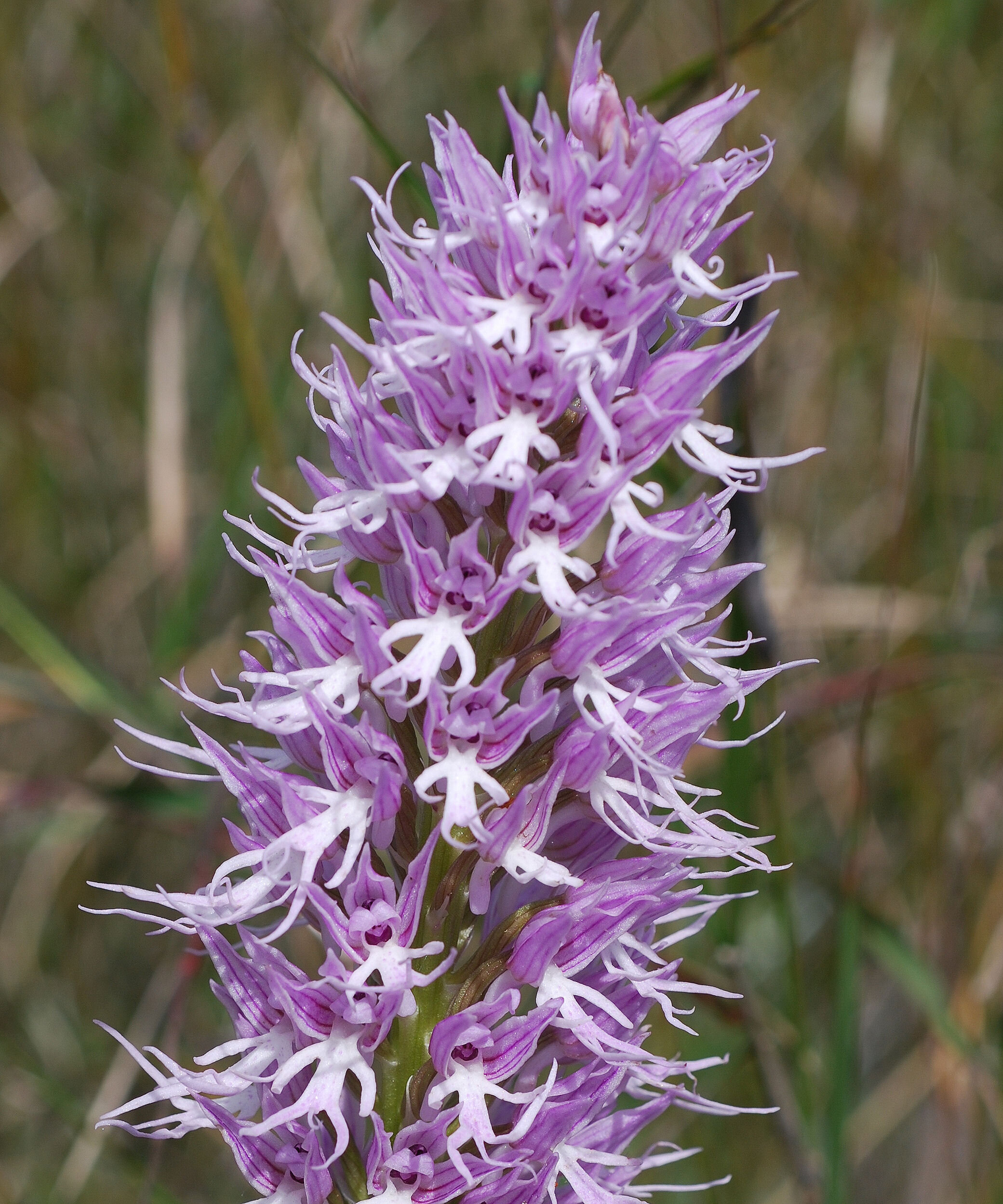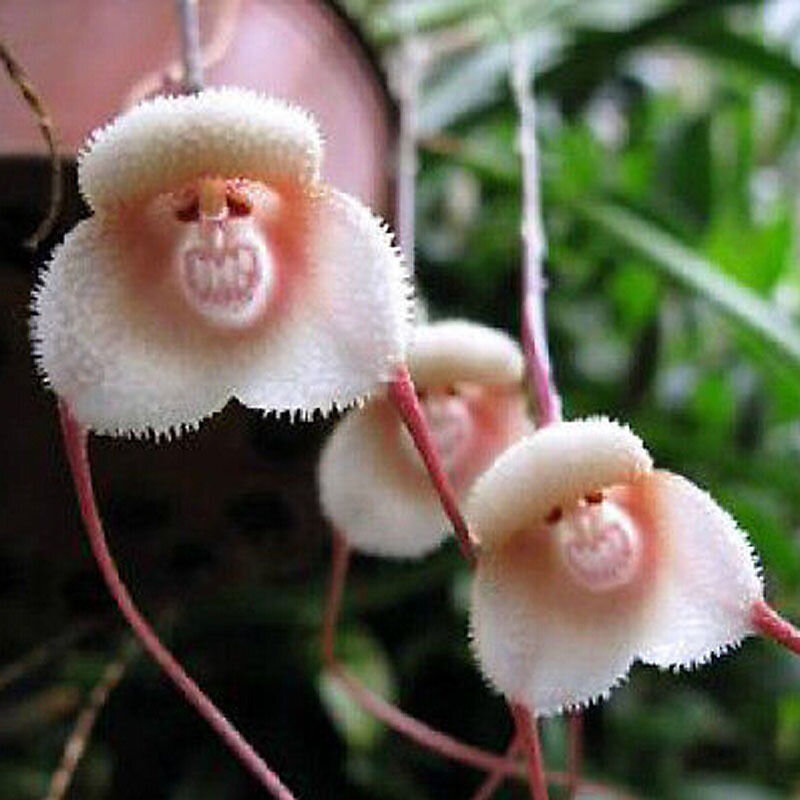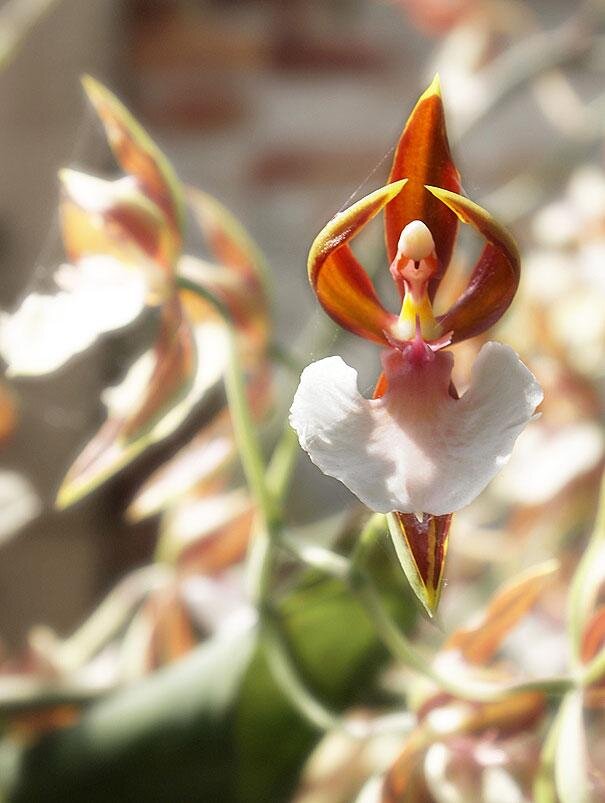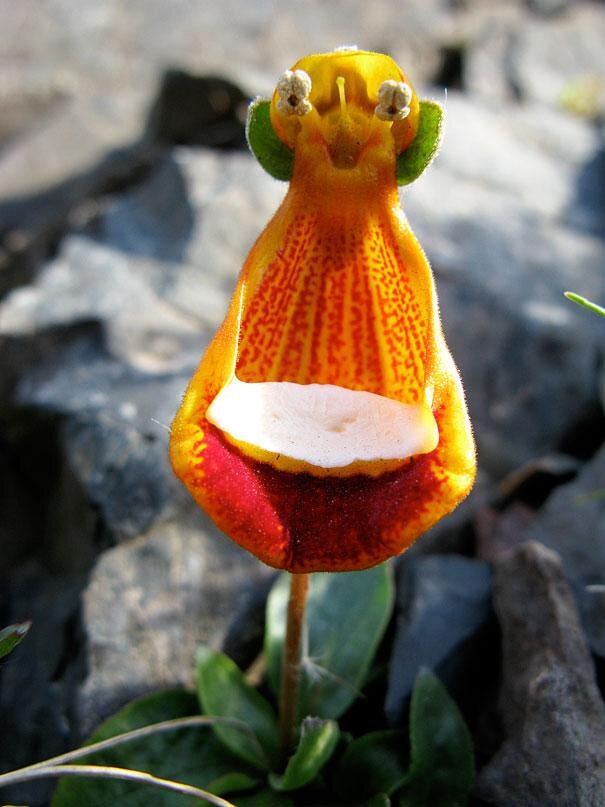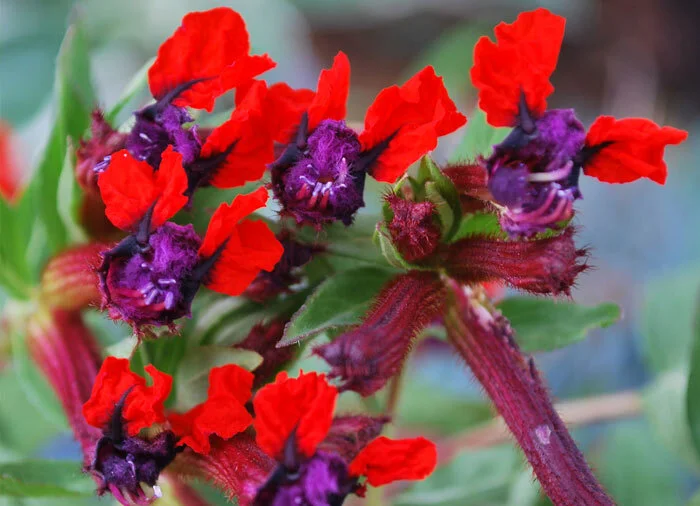Well there’s really no reason to post this as it will do nothing help you improve your gardening skills!
But it might just put a little smile on your face…..
Naked Man Orchid
Orchis italica, commonly known as the naked man orchid or the Italian orchid, is a species of orchid native to the Mediterranean. It gets its common name from the lobed lip of each flower which mimics the general shape of a naked man. In Italy, it is believed that the consumption of the plant is conducive to virility. It prefers partial shade and low nutrient soil and flowers in April. O. italica grows up to 50 centimetres in height, with bright pink, densely clustered flowers. They are found commonly and widespread in the Mediterranean in large clusters.
Orchis italica
Monkeyface Orchid
Dracula simia, called also monkey orchid or the monkey-like Dracula, is an epiphytic orchid originally described in the genus Masdevallia, but later moved to the genus Dracula. The arrangement of column, petals and lip strongly resembles a monkey's face. The plant blooms at any season with several flowers on the inflorescence that open successively. Flowers are fragrant with the scent of a ripe orange.
Dracula simia
Dove Orchid
Peristeria elata is a species of orchid occurring from Central America to Panamá, Venezuela and Ecuador. It is the type species of its genus. It is commonly referred to as the Holy Ghost orchid, dove orchid or flower of the Holy Spirit in English, and, as the flor del Espiritu Santo in Spanish.
Peristeria elata
Red Lips
Palicourea elata, commonly known as hot lips red lips, and some less polite common names!, is a tropical plant native to rain forests in Central and South American countries such as Costa Rica, Ecuador, Panama, and Colombia. It can adapt to temperate climates. It is notable for its distinctly-shaped red bracts.
Palicourea elata
White Egret Orchid
Pecteilis radiata is a species of orchid found in China, Japan, Korea and Russia. It is commonly known as the white egret flower, fringed orchid or sagisō. It is not to be confused with the white fringed orchid Platanthera praeclara, which is a North American species. The Sagiso is the official flower of Setagaya ward, Tokyo.
Pacteilis radiata
Titan Arum
Amorphophallus titanum, the Titan Arum, is a flowering plant with the largest unbranched inflorescence in the world. It is endemic to Sumatra.
Due to its odour, which is like the smell of a rotting corpse or carcass, the Titan Arum is also often known as a Carrion Flower.
Amorphophallus
titanum
Ballerina Orchid
Caladenia melanema
Caladenia melanema, commonly known as the ballerina orchid, is a species of orchid endemic to the south-west of Western Australia. It is a rare orchid with a single erect, hairy leaf and one or two cream-coloured to pale yellow flowers with red markings and black tips on the sepals and petals.
Bat Flower
Tacca chantrieri, the black Bat Flower, is a species of flowering plant in the yam family (Dioscoreaceae). It is an unusual plant in that it has almost black flowers, up to 12 inches across, and has long ‘whiskers’ that can stretch up to 28 inches long.
Tacca chantrieri
Elephant Flower
Pedicularis groenlandica is a showy flowering plant in the broomrape family which is known by the common names elephant's head and elephanthead lousewort. This erect plant can grow to a height of 80 centimetres. Its sharply-toothed fernlike leaves are located low on the stout stem. The stem is topped with a large inflorescence of bright pink to purple or white flowers. Each flower has a long, pointed beak which curves upward, superficially resembling the trunk of an elephant, and the lateral lobes of the flower resemble an elephant's ears. Like other louseworts and related broomrape genera, this is a root parasite which obtains nutrients from the roots of other plants by piercing them with haustoria. This plant is found in the high mountain ranges of western North America, particularly the Cascades and High Sierra, much of Canada and Greenland. It grows in wet environments such as riverbanks.
Pedicularis groenlandica
Angel Orchid
Habenaria grandifloriformis
Habenaria, commonly called rein orchids or bog orchids, is a widely distributed genus of orchids in the tribe Orchideae. About 880 species of Habenaria have been formally described. They are native to every continent except Antarctica, growing in both tropical and subtropical zones.
Spider Orchid
Habenaria medusa
Flying Duck Orchid
Native to the Australian wilderness, flying duck orchid plants (Caleana major) are amazing orchids that produce – you guessed it – distinctive duck-like blooms.The red, purple and green blooms, which appear in late spring and early summer, are tiny, measuring only ½ to ¾ inches in length.
Caleana major
Darth Vader
Darth Vader plant (Aristolochia salvadorensis syn. Aristolochia Salvador platensis), a woody climber native to the humid meadows and soggy flood plains of Brazil, belongs to the Aristolochiaceae family of plants, which includes pipevines, birthworts and Dutchman’s pipe.
Aristolochia
salvadorensis
Laughing Bee Orchid
The attractive bumblebee orchid or ophrys bombyliflora flowers grow in Canary Islands, Turkey and Lebanon. The large sepals, small bronze colored petals and brownish lip of this unusual flower resemble an attractive female bee. In that way this incredible flower act like female pollinator.
Ophrys bombyliflora
Parrot Flower
Impatiens psittacina, known variously as the "parrot flower" or "parrot balsam" is a species of balsam from Southeast Asia that was described by the botanist Joseph Dalton Hooker and was noted for its flower that resemble a "flying cockatoo". It is known from Thailand, Burma and parts of India.
Impatiens psittacina
Swaddled Babies
The exotic swaddle babies orchid or Anguloa uniflora flowers are native to Colombian Andes of South America. The flowers have an opening in their upper parts and inside look like a swaddled baby. The flowers also have a hinged lip. The anguloa uniflora plant bloom in summer. The large waxy flowers grow 10 cm across and they are very fragrant.
Anguloa uniflora
Happy Alien
First of all, the term Happy Alien actually does serve as the common name of this astounding plant. It also ranks as a most unusual species. Quite understandably, its common name derives from the unique appearance of its blooms. Furthermore, it grows naturally in only one location in the world. However, it eventually spread, presumably due to human activity. As a result, it now appears in Chile and Argentina. But, for now, it only appears there in scattered locations. In addition, it was Charles Darwin himself who officially discovered it. This amazing discovery occurred during his 1831-1836 expedition. But, other individuals previously described it unofficially as early as 1791.For the moment, the IUCN it does not yet list it on its Red List of Threatened Species. However, its restricted range does make it vulnerable. Its potential threats include habitat loss and climate change.
Calceolaria uniflora
Tiny Mice
Cuphea is a low growing shrub perfect for growing in containers and baskets. Unusual bright red and purple flowers that look like little mice, hence its name, bloom in spring and right through into autumn. Attractive to bees and butterflies. Prefers sun or part shade in moist but well-drained soil.
Cuphea llavea


